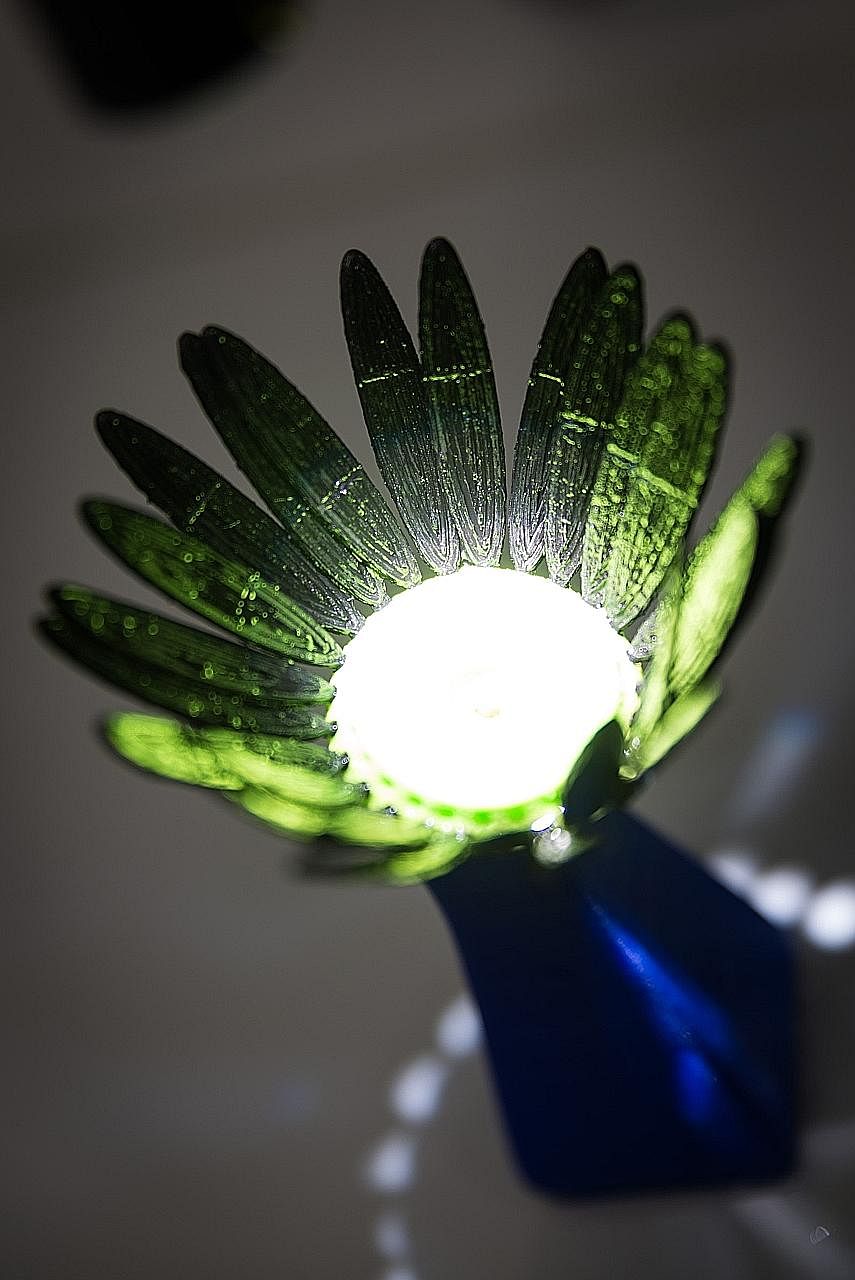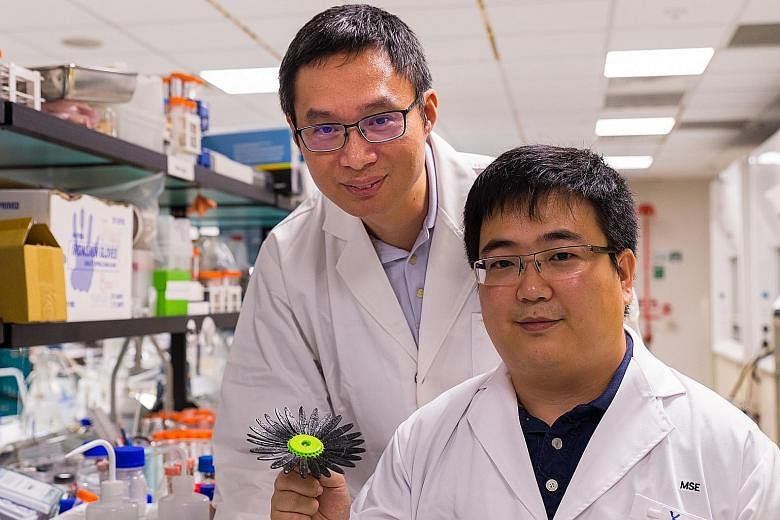This sunflower blooms like any other when it soaks up the sun's rays, but it is far from being alive.
It was 3D printed using a material that combines a shape-memory polymer and carbon black, a material that absorbs light and converts it into heat.
Even after it is forced into the shape of a bud, it regains its original shape in less than five minutes when it gets a healthy dose of ultraviolet rays.
It may appear to be just a pretty ornament, but its inventors from Nanyang Technological University (NTU) say it represents the opportunities in the 3D printing field, where devices responsive to various types of stimuli, including light and humidity, can be 3D printed.
"This could mean smart solar cells that turn automatically towards the sun," said Professor Chen Xiaodong, director of the Innovative Centre for Flexible Devices at NTU, who led the research.
A paper that demonstrates the 3D printing of light-responsive shape-memory devices, like the sunflower, was published in the peer-reviewed journal Advanced Materials in June.
3D printing is being hailed as a force in advanced manufacturing or Industry 4.0, which is set to revolutionise the way goods are produced. The technology is expected to make the production of goods faster and cheaper, and allow for the manufacture of devices not previously possible, like the NTU sunflower.

Prof Chen is already working to make smart solar cells using a similar concept, by integrating shape- memory polymers with existing solar cells.
He also hopes to develop a stent that can be deformed, inserted into a clogged blood vessel, and then expanded using infrared light.
Professor Shlomo Magdassi - an expert on 3D printing from the Hebrew University of Jerusalem's Institute of Chemistry who was not involved in the research - said the NTU breakthrough is a clever idea that can also be applied to soft robotics, in which controlled movement of objects is required.
"Triggering by light will enable remote operation of parts of soft robots, such as delicate grippers and remote control of valves," he said. "This work may also open possibilities in biomedical applications."
But Prof Chen noted that challenges remain. "The big bottleneck is still materials as few can be 3D printed," he said. These include metals like copper and gold.
"But the concept is there... which can be used by different people and applied to their own systems. That is the beauty of research."

